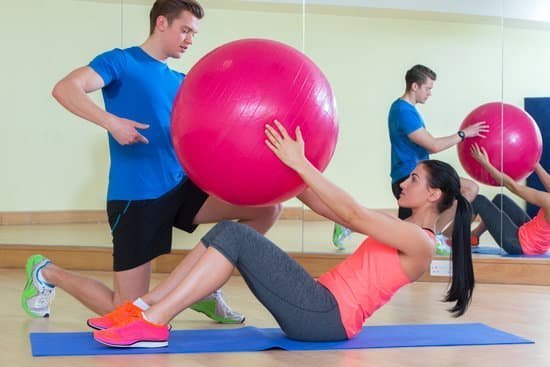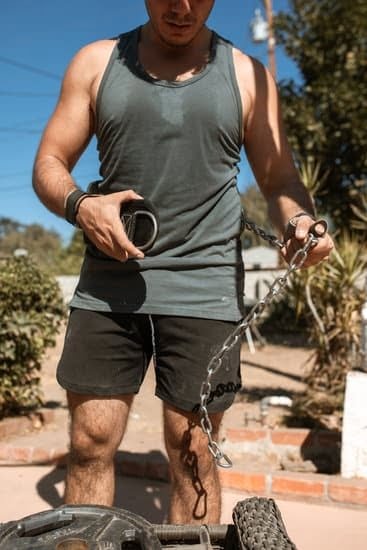In today’s digital age, short movement videos have become an essential tool for fitness enthusiasts to elevate their exercise routines. With just a few clicks, anyone can access a plethora of fitness videos that demonstrate various exercises and techniques.
These videos not only provide guidance but also motivate and inspire individuals to stay committed to their fitness goals. Whether you are a beginner looking for guidance or an experienced exerciser wanting to switch up your routine, learning how to create your own short movement video can be a game-changer.
The purpose of this article is to guide you through the process of creating effective short movement videos for fitness exercise. We will explore the advantages of utilizing this medium and understand why it has become such a popular choice among fitness enthusiasts and professionals.
By breaking down the techniques, offering tips on filming and composition, and providing insights into editing and post-production, this article aims to equip you with all the necessary knowledge and skills to create engaging and impactful movement videos.
Before we delve into the details, it is crucial to understand why short movement videos are so effective. In today’s fast-paced world, time is often limited, making it challenging for many individuals to dedicate long periods to their exercise routines.
Short movement videos offer a solution by providing quick yet efficient workouts that can be easily incorporated into busy schedules. Additionally, these videos allow individuals to visually grasp proper form and execution of exercises, reducing the risk of injury and maximizing the effectiveness of their workouts.
Understanding the Purpose
Short movement videos have gained significant popularity in the fitness world due to their effectiveness in conveying exercises and movements. These videos serve as valuable tools for individuals looking to elevate their fitness routine, as they provide visual demonstrations and step-by-step instructions that are easy to follow. Understanding the purpose behind these videos can help you create content that resonates with your audience and maximizes the impact of your fitness exercise.
Visual Learning and Demonstration
One of the primary reasons why short movement videos are effective is because they cater to visual learners who benefit from seeing exercises in action. Many individuals find it easier to understand proper form, technique, and movements when they can watch someone else perform them. By offering a visual demonstration, these videos ensure that viewers can easily grasp how each exercise should be performed, reducing the risk of injury or incorrect execution.
Bite-Sized Content for Convenience
In today’s fast-paced world, people often crave content that is easily consumable and doesn’t require a significant time commitment. Short movement videos address this need by providing quick but impactful demonstrations of exercises.
With attention spans becoming shorter than ever, these bite-sized videos capture viewers’ attention and keep them engaged throughout their duration. By condensing all the necessary information into a concise video, you’re making it easier for your audience to incorporate your fitness exercises into their busy schedules.
Social Media Appeal
Short movement videos are particularly effective on social media platforms where users commonly scroll through their feeds quickly. These platforms prioritize video content with features such as autoplay or auto-looping, which increase the chances of your video being seen by a wider audience.
Additionally, short movement videos can be easily shared or re-shared by users who find them valuable or want to inspire others with their fitness journey. The viral nature of these videos makes them ideal for reaching a vast audience and gaining visibility in the fitness community.
Understanding the purpose behind short movement videos allows you to create content that effectively communicates your fitness exercises. By catering to visual learners, providing bite-sized content for convenience, and capitalizing on social media appeal, these videos can elevate your fitness routine and inspire others to join in. In the next section, we will discuss tips for preparing your set to ensure you create an optimal filming environment for your movement video.
Preparing Your Set
Creating a suitable filming environment is crucial when shooting a short movement video for fitness exercise. By setting up a proper backdrop and ensuring good lighting and sound, you can enhance the quality of your video while also elevating the overall viewer experience. Here are some valuable tips to help you prepare your set:
Choosing the Appropriate Background
Selecting the right background for your movement video is essential to maintain visual appeal and avoid distractions. Opt for a clean and uncluttered backdrop that complements your exercises and doesn’t compete for attention. Solid colors such as white, black, or neutral tones tend to work well. Avoid busy patterns or cluttered backgrounds that may draw the viewer’s focus away from the main subject – you.
Lighting Techniques
Proper lighting plays a vital role in capturing clear and visually appealing shots in your movement video. Whenever possible, use natural light by filming near windows or outdoors during daylight hours. If natural light is inadequate, consider investing in affordable studio lights or ring lights that provide consistent, even illumination on your subject.
Avoid harsh shadows by placing the light source at an angle to minimize direct glare on the camera lens or reflection off shiny surfaces. Experiment with different lighting setups to find what works best for highlighting your movements and providing optimal visibility.
Sound Quality Considerations
Crystal-clear audio is just as important as high-quality visuals when creating a movement video. To ensure good sound quality, choose a quiet location free from background noise or echoes that may distract or hinder clarity.
Consider using an external microphone if your camera’s built-in microphone doesn’t capture audio well. Look for lapel microphones that attach directly to your clothing for improved sound pick-up during movement sequences. Alternatively, consider using voice-over narration during post-production if audio clarity during filming proves challenging.
By following these tips, you can create an optimal filming environment for your short movement video. Remember, a well-prepared set enhances the professionalism and overall impact of your fitness exercise video, ensuring that viewers stay engaged and get the most out of your instructional content.
Selecting the Right Exercises
When creating a short movement video for fitness exercise, it is important to select the right exercises that target specific muscle groups and movements. By choosing exercises that are effective and efficient, you can maximize the impact of your movement video and help viewers achieve their fitness goals. Here are some tips on how to select the right exercises for your video:
- Identify target muscle groups: Start by determining which muscle groups you want to focus on in your movement video. Consider the goals of your viewers and what areas they may want to work on. For example, if you want to target the lower body, you might include exercises such as squats, lunges, and leg presses.
- Incorporate a variety of movements: To keep your movement video engaging and diverse, include a variety of different movements. This could include exercises that involve pushing, pulling, twisting, or bending motions. By incorporating different types of movements, you can ensure that all major muscle groups are targeted.
- Consider equipment availability: Keep in mind the equipment that your viewers may have access to when selecting exercises for your video. If your viewers have limited equipment available (such as dumbbells or resistance bands), make sure to include exercises that can be done using these items. Alternatively, if you are targeting a specific niche audience with specific equipment (such as kettlebells or stability balls), select exercises accordingly.
By carefully selecting the right exercises for your movement video, you can create an effective workout routine that targets specific muscle groups and movements. This will not only help viewers achieve their fitness goals but also make your video valuable and engaging content.
| Target Muscle Group | Exercises |
|---|---|
| Lower Body | Squats, Lunges, Leg Presses |
| Upper Body | Push-ups, Pull-ups, Dumbbell Rows |
| Core | Planks, Russian Twists, Bicycle Crunches |
| Total Body | Burpees, Mountain Climbers, Jumping Jacks |
Planning the Sequence
One of the key factors that can make a movement video truly effective is having a logical flow to the exercises. By planning the sequence of your movement video carefully, you can create a smooth transition from one exercise to the next, helping viewers follow along with ease and ensuring that they get a comprehensive workout. Here are some tips for building a logical flow for your movement video:
- Start with a warm-up: Begin your movement video by including some dynamic stretching or low-intensity exercises to warm up the muscles and increase blood flow. This will prepare viewers for the more intense exercises later on and help prevent injuries.
- Progress from compound movements to isolations: When planning the sequence of exercises, it’s important to progress from compound movements that work multiple muscle groups to isolations that target specific muscles. This allows viewers to gradually focus on different areas of their body and ensures a well-rounded workout.
- Alternate between upper body and lower body exercises: To keep your movement video balanced, consider alternating between upper body and lower body exercises. This prevents viewers from getting fatigued in one area too quickly and helps them engage different muscle groups throughout the workout.
- Include modifications or regressions: Remember that not all viewers may be at the same fitness level, so it’s important to include modifications or regressions for each exercise. This allows individuals with varying abilities to participate in your workout and makes your movement video more inclusive.
- End with cool-down and stretching: Just like starting with a warm-up, it’s crucial to end your movement video with cool-down exercises and stretching. This helps bring down heart rates gradually and prevents muscle soreness after the workout.
By following these tips, you can create a logical flow for your movement video that provides maximum benefit to viewers of all fitness levels. Remember, variety is key, so try switching up the order of exercises in different videos to keep things interesting for your audience.
Breaking Down the Techniques
In this section, we will discuss the importance of breaking down the techniques and providing step-by-step instructions for each exercise in your short movement video. This is crucial to ensure that viewers can understand and follow along with your exercises effectively.
When creating a movement video, it is essential to remember that your audience may have varying levels of fitness experience. Therefore, breaking down the techniques into simple and easy-to-follow steps will help accommodate beginners while also providing value to more advanced individuals.
Start by clearly explaining the starting position for each exercise, including any modifications or variations that can be made based on fitness level or equipment availability. This will allow viewers to choose an appropriate starting point for their own fitness journey.
After establishing the correct starting position, guide viewers through each movement step-by-step. Use clear and concise language to describe proper form, body alignment, and movement execution. Consider using visual cues, such as arrows or highlighting specific body parts, to further enhance understanding.
It is also advisable to provide tips and reminders during each exercise. For example, reminding viewers to engage their core or maintain a neutral spine can help prevent injury and maximize the effectiveness of the exercise.
Lastly, consider demonstrating any modifications or progressions for each exercise. This allows viewers to customize their workout based on their individual needs and goals. Providing options for different difficulty levels can make your video more inclusive and appealing to a wider audience.
By breaking down the techniques with detailed step-by-step instructions, you can ensure that your short movement video is accessible and beneficial for individuals at all fitness levels.
Filming and Composition
When creating a short movement video for fitness exercise, the quality of your shots can greatly impact the effectiveness of your video. Clear and engaging shots not only make it easier for viewers to understand the exercises but also make your video more visually appealing. In this section, we will provide you with some tips to capture professional-looking shots that will enhance the overall quality of your movement video.
- Use a stable camera setup: Shaky footage can be distracting and make it difficult for viewers to follow along. To avoid this, use a tripod or any stable surface to keep your camera steady while filming. Alternatively, you can consider using a smartphone stabilizer or gimbal if you are filming on a mobile device.
- Pay attention to lighting: Good lighting is crucial for capturing clear shots. Natural light is often the best option as it provides even illumination. If filming indoors, position yourself near a window or set up artificial lighting that is bright but not too harsh. Avoid filming in dimly lit areas as it may result in grainy or unclear footage.
- Frame your shots appropriately: Consider the composition of each shot to ensure that the relevant movements are clearly visible. Position yourself at an angle where viewers can see both your body and any equipment you are using. Make sure there is enough space around you to avoid any obstructions or distractions in the frame.
| Tips for Capturing Clear and Engaging Shots |
|---|
| Use a stable camera setup |
| Pay attention to lighting |
| Frame your shots appropriately |
By following these tips, you can ensure that your movement video is well-shot and visually appealing. Clear and engaging shots will not only help viewers understand the exercises better but also make your video stand out among other fitness content. Remember to experiment with different angles, lighting setups, and compositions to find what works best for your style and the specific movements you are showcasing.
Editing and Post-production
After capturing all of the footage for your short movement video, the next step is to edit and post-produce your video to enhance its impact. Editing and post-production are crucial in creating a polished and professional-looking video that will captivate your audience and effectively convey the purpose of your fitness exercise.
- Organize Your Footage: Before you start editing, it’s important to organize your footage. Create folders or bins to separate different exercises or movements, making it easier to locate specific shots when you’re ready to edit. This organization will save you time and help streamline the editing process.
- Use Video Editing Software: There are various video editing software options available, both free and paid, depending on your skill level and budget. Experiment with different software until you find one that fits your needs. Some popular options include Adobe Premiere Pro, Final Cut Pro, iMovie, and DaVinci Resolve.
- Trim and Arrange Footage: Begin by trimming unnecessary parts of each clip to keep your video concise and engaging. Next, arrange the clips in a logical sequence that flows smoothly from one movement to the next. Consider using transitions between clips for a seamless viewing experience.
- Apply Color Correction: Enhance the visual appeal of your video by applying color correction techniques during post-production. This can involve adjusting brightness, contrast, saturation, and white balance settings to achieve a consistent look throughout your video.
- Add Text and Graphics: To provide additional information or highlight specific details about an exercise or movement, consider adding text overlays or graphics to your video. This can be useful in demonstrating correct form or explaining modifications for different fitness levels.
- Add Effects and Transitions: Effects such as slow motion or overlays can add visual interest to your movement video while transitions can help create smooth transitions between different exercises or movements.
- Fine-tune Audio: Pay attention to audio quality during post-production by adjusting levels and removing any background noise. If needed, consider incorporating voiceovers or music to enhance the overall viewing experience. Make sure the audio is clear and does not overpower the video content.
- Export and Render: Once you are satisfied with your edited video, it’s time to export and render your final product. Choose an appropriate file format and resolution that suits your intended platform for sharing.
By following these editing and post-production tips, you can enhance the impact of your movement video, making it more engaging and visually appealing. This step is crucial in creating a professional-looking video that effectively demonstrates fitness exercises and motivates viewers to incorporate them into their own routines.
Adding Music and Voiceovers
Adding music and voiceovers to your movement video is an essential step in enhancing the overall experience for viewers. Choosing the right audio can help create a dynamic and engaging atmosphere that motivates and inspires people to participate in fitness exercise. In this section, we will explore how you can select the perfect music and voiceover to complement your movement video.
When it comes to choosing music for your movement video, it’s important to consider the tone and energy you want to convey. Upbeat, energetic tracks are often popular choices as they can add a sense of excitement and motivation to the video.
However, make sure the tempo of the music aligns with the pacing of your exercises. You don’t want the music to be too fast or slow, as it may not sync well with the movements and disrupt the flow of your video.
Additionally, ensure that you have proper licensing for any copyrighted music used in your video. There are various platforms that offer royalty-free music specifically designed for fitness videos. These platforms provide a wide range of tracks to choose from, allowing you to find something that matches both the style of your video and the mood you want to create.
In addition to music, incorporating voiceovers into your movement video can provide further guidance and instruction for viewers. Voiceovers can be particularly helpful in explaining proper form, offering modifications or variations of exercises, or sharing additional tips and motivation. When recording voiceovers, ensure that they are clear, concise, and easy to understand. Use a high-quality microphone or record in a quiet environment to avoid any background noise or distractions that could hinder comprehension.
Choosing appropriate audio elements such as music and voiceovers is crucial when it comes to enhancing your movement videos for fitness exercise. By carefully selecting tracks that match the energy level of your exercises and incorporating informative voiceovers, you can create an immersive experience that encourages viewers to follow along and engage with your content.
Remember, finding a balance between audio elements that complement your video and appeal to your target audience is key in maximizing the impact of your movement video.
Sharing and Promoting
In today’s digital age, creating a movement video for fitness exercise is not just about the quality of the video itself, but also about how effectively you share and promote it. With millions of videos available online, it’s important to have a strategy in place to maximize the reach of your movement video. In this section, we will explore various strategies and techniques that can help you share and promote your video for maximum impact.
Utilize Social Media Platforms
One of the most effective ways to share and promote your movement video is through social media platforms. Create accounts on popular platforms such as Instagram, YouTube, Facebook, or TikTok to reach a wider audience. Tailor your content to each platform by utilizing hashtags, engaging with your audience through comments and messages, and collaborating with influencers or fitness enthusiasts in your niche.
Leverage Search Engine Optimization (SEO)
Optimizing your video for search engines is crucial in increasing its visibility and reaching more people. Research relevant keywords related to fitness exercises and incorporate them into your video title, description, and tags. This will make it easier for people searching for similar content to find your video.
Engage with Your Audience
Building an engaged community around your movement videos is essential for their long-term success. Respond to comments on your videos, ask for feedback, and encourage viewers to subscribe or follow you for future updates. By building a connection with your audience, they are more likely to share your content and become loyal followers.
Collaborate with Others
Collaborating with other fitness influencers or creators in the industry can greatly expand the reach of your movement video. Reach out to individuals or brands who align with your niche and propose collaboration ideas such as guest appearances on each other’s channels or joint projects. This cross-promotion can expose your video to new audiences and introduce you to a wider network of potential viewers.
Use Paid Advertising
If you have the budget, consider utilizing paid advertising to boost the visibility of your movement video. Platforms like YouTube and Facebook offer targeted advertising options that allow you to reach specific demographics or interests. This can be a powerful tool in reaching a larger audience and increasing the chances of your video being shared organically.
Conclusion
In conclusion, incorporating short movement videos into your fitness routine can have a transformative impact on your overall workout experience. These videos serve as powerful tools to guide and motivate you, helping you to target specific muscle groups and movements effectively. By following the step-by-step instructions provided in these videos, you can improve your technique and ensure that you are performing exercises correctly.
Creating an optimal filming environment is crucial to producing high-quality movement videos. By considering factors such as lighting, background, and camera angles, you can capture clear and engaging shots that enhance the viewer’s understanding of the exercises being demonstrated. In the editing and post-production stage, you have the opportunity to further enhance your video by adding effects or text overlays that emphasize important points or cues.
Furthermore, incorporating music and voiceovers into your movement videos can greatly enhance their impact. Choosing the right audio can help set the tone for your video and keep viewers engaged throughout. Music can add energy and rhythm while voiceovers provide additional guidance and motivation.
Finally, once your movement video is complete, it is important to share and promote it effectively to maximize its reach. Utilize social media platforms, fitness communities, and websites dedicated to sharing workout content to increase visibility. Encourage others to try out your exercises by providing links or instructions in the video description.
By utilizing short movement videos in your fitness routine, you can elevate your workouts to new heights. From enhancing technique to adding variety and excitement to your exercise regimen, these videos offer a unique way to make the most of your fitness journey. With careful preparation, effective filming techniques, creative editing choices, appropriate audio selection, and strategic sharing strategies – you have the power to create dynamic movement videos that inspire others while improving yourself along the way.
Frequently Asked Questions
How do you make a good fitness video?
Making a good fitness video requires careful planning and attention to various aspects. First and foremost, it is crucial to have a clear objective for the video, whether it’s teaching a specific exercise or demonstrating a full workout routine. The video should have a well-structured format, starting with an introduction that outlines the purpose of the video and what viewers can expect. It’s important to choose a suitable location with good lighting and minimal distraction.
Proper equipment, such as a high-quality camera and microphone, will ensure clear visuals and sound. Additionally, effective communication is key – the instructor should provide clear instructions, demonstrate proper form, and offer modifications for different fitness levels. Finally, editing the video professionally can enhance its visual appeal by adding graphics, text overlays, and background music.
How do you make an animated fitness video?
Creating an animated fitness video can add a unique and engaging element to your content. To make one, you’ll need animation software such as Adobe After Effects or Toon Boom Harmony. The first step is to plan out your storyboard or script in detail, ensuring that each frame of animation conveys the desired information accurately.
Then you can use the software tools provided to create characters, backgrounds, and props using either pre-made assets or drawing them from scratch. Implementing movements that mimic real-life exercises helps maintain viewer familiarity while enjoying the advantages of animation flexibility. Pay attention to timing and pacing to ensure coherent animations that sync with any voiceover or music you might include.
What app can I use to make fitness videos?
There are several apps available for creating fitness videos directly from your smartphone or tablet. One popular option is FiTuber which provides various tools for customization like adding text overlays and integrating music into your videos; it also offers built-in workout templates if you’re looking for guidance on structuring your videos effectively. Another app worth considering is VideoShop which comes with features like trimming clips, applying filters or effects, merging multiple videos together seamlessly while adjusting speed settings too; this app can significantly enhance the visual appeal of your fitness content.
Additionally, you can explore other apps like Kinemaster or InShot, which provide easy-to-use interfaces along with video editing tools to create high-quality fitness videos on the go. Choose an app that suits your preferences and offers the necessary features to create engaging and professional fitness videos.

Passionate about providing useful information to anyone with an interest in the field of Personal Training, I strive to pass on to our readers quality information and to answer any questions about Personal Trainers, the work they do and how to become one.





